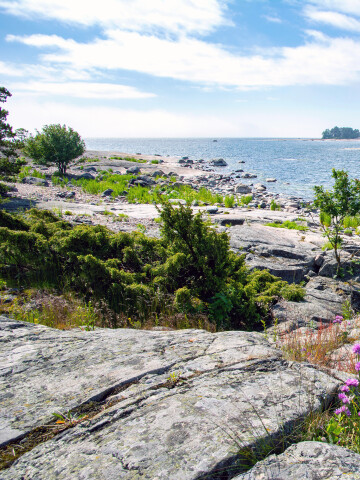
FUI-Bloggen
FUI är förkortningen för forskning, utveckling och innovation. I FUI-bloggen skriver Yrkeshögskolan Novias personal om sitt jobb, forskning, projektverksamhet och andra betraktelser.
Blogginlägg som är granskat av Novias redaktionsråd är utmärkta med nyckelordet "Granskat inlägg".
Vi följer CC-BY 4.0 om inget annat nämns.
Perspectives from the Gasgrid Event: Navigating the Future of Energy in Finland
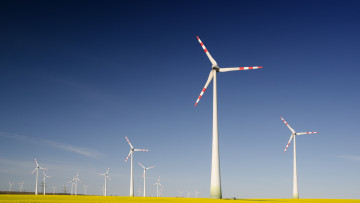
Introduction
On November 27, 2024, I had the privilege of attending an insightful event, organized by Gasgrid. Industry leaders and experts gathered to discuss the future of energy in Finland and beyond. This event, the second information seminar hosted by Gasgrid, saw a significant increase in participation, reflecting the growing interest in energy innovations and strategic discussions. With 300 attendees, up from 200 in the previous seminar, the event was a melting pot of ideas aimed at addressing the pressing energy challenges of our time.
I had the chance to participate thanks to the project "Mapping CO2 Streams in Ostrobothnia: Unlocking Potential for the P2X Economy (Map Up P2X). The project is financed by the Regional Council of Ostrobothnia. This project focuses mainly on CO2 and E-fuels (P2X). To enable E-Fuels, we need a cost-efficient hydrogen network. Therefore, this seminar gave discerning information for the project work, when looking at the E-fuel process from the hydrogen perspective. The outcome of the day exceeded my expectations, as the focus was also on E-fuels and the infrastructure.
Keynote Highlights
The event kicked off with Olli Sipilä, CEO of Gasgrid, setting the stage for a day filled with thought-provoking presentations and discussions. One of the standout presentations was given by Risto E.J. Penttilä, CEO of Nordic West Office, who provided a comprehensive analysis of the geopolitical landscape and its impact on economic growth and energy futures. He opened the shifting dynamics between major global players like China, India, and the US which was particularly enlightening.
Geopolitical Shifts and Economic Implications
Penttilä highlighted several key points, and I considered the following as the most important:
- The role of the United Nations is no longer recognized by China, India, and several African nations. This indicates significant geopolitical shifts. The change in the leadership of the United States will also weaken the role of the United Nations.
- The ongoing conflicts in regions like Israel and Iran, and the potential for peace talks in Ukraine will be affected by the new president of the United States. All these global changes will have an impact on Finland. To what extent is depending on the outcome.
- The economic future of Europe appears uncertain, with a preference for trade with China, despite geopolitical tensions. The regulations of the European Union need to be to some extent harmonized with the rest of the world.
- The United States experiences growth, driven by policies like tax cuts and deregulation, often referred to as Trumponomics.
These above geopolitical situations underscore the complex and interconnected nature of global energy markets, and the need for strategic planning and adaptability.
Energy Sector Developments
Tuomas Rauhala, Director at Fingrid, provided an update on the electricity market and infrastructure in Finland. The key takeaways include the following:
- Electricity consumption is growing slower than expected, but there is a high demand for new connections.
- The transition to a weather-dependent energy system is accelerating, necessitating robust regulatory measures.
- Finland's competitive edge lies in its clean electricity, with significant investments planned for the national grid.
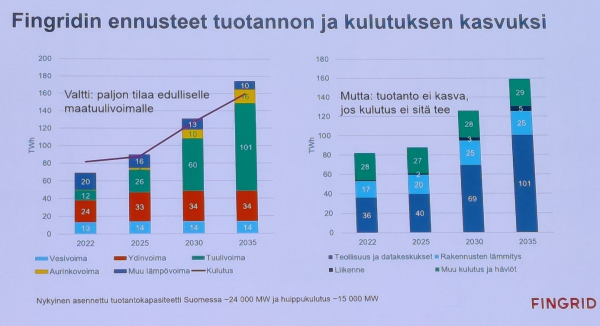
Figure 1. Fingrid’s forecasts for production and consumption growth.
As shown in Figure 1, the growth in energy production is forecasted from onshore wind power. The consumption will increase in industry and data centres. But production will not increase if there is no increase in consumption. One solution is the hydrogen value chain, where the excess energy is transferred to hydrogen. From this perspective a hydrogen network is welcomed, and investments are needed in both electrical and hydrogen infrastructure.
Rauhala further emphasized the importance of long-term planning for the strengthening of the grid and flexibility in energy consumption and both long- and short-time storage to ensure a stable and resilient electricity balance.
The Role of Hydrogen
A significant portion of the event focused on hydrogen as a key component in Finland's energy strategy. The Finnish government stated 2023 that 10 % of EU green hydrogen needs 2030 could be produced in Finland. Toni Krankkala, CEO of NIHAK, discussed ambitious plans for solar and wind power projects, alongside the development of hydrogen production facilities. It was repeated that hydrogen has a potential to drive regional growth and create new jobs. Krankkala’s vision for a future ecosystem is presented in the following figure 2.
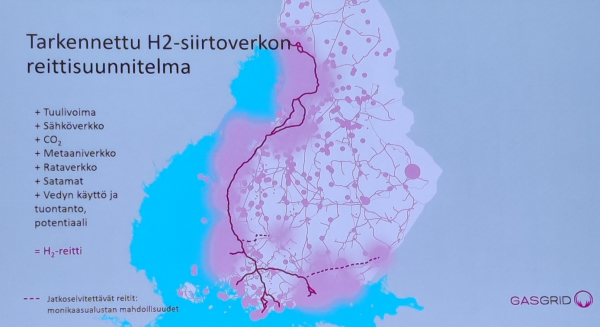
Figure 2. Local Ecosytem with Hydrogen value chain.
The core of the value chain explained in figure 2 is the infrastructure. In addition to existing roads, railways, and the electrical grid, the suggested gas grid is highlighted in green. The hydrogen (H2) grid supplies chemical plants, and H2 production units feed hydrogen into the grid. Key resources for H2 production include green wind and solar power, supported by battery storage. CO2 is collected from biogas and bioproduct plants (Blue lines) and, together with H2, various P2X products are generated. The processes also produce heat, which is utilized by a local district heating system (red line) to manage excess heat.
Krankkala highlighted the strategic importance of infrastructure. It includes ports and railways, that support hydrogen production and distribution. It is also important to have clean groundwater and solid water treatment facilities. The land use should be planned by the municipalities in advance, as the permitting processes are long.
Technological Innovations
Antti Pohjoranta from eTehdas talked about the transformation from electricity into hydrogen, methane, and methanol as energy source. This innovative approach aims to leverage Finland's unique BIO-CO2 resources, positioning the country as a leader in sustainable energy solutions. (Biogenic CO2 refers to carbon in wood, paper and similar biofuels). Finland has enough BIO-CO2 in combination with potential hydrogen production to fulfil the requirements of the European Union for sustainable aviation fuel (SAF) up to 2040. One of the remaining challenges is the high market price of E-fuel.
Pohjoranta discussed several ongoing Power to X projects. The name describes changing the electricity to different types of fuels. X can be as example hydrogen, methane or methanol. He emphasized the need for increased electricity production to support these initiatives. Finland can also become independent of oil products and some chemical products like ammonia. Ammonia can be made from green hydrogen and nitrogen from the air.
Outlook
The event was concluded with a forward-looking presentation on the future of Finland's energy landscape. Sara Kärki and Heli Virkki from Gasgrid emphasized the importance of local energy production and the development of a robust hydrogen network. Gasgrid is also simultaneously investigating the needs and business models for local CO2 and methane networks.
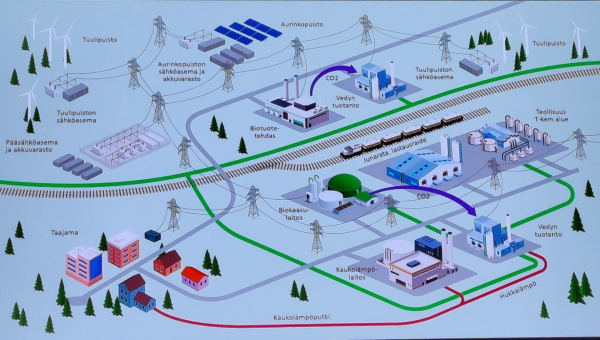
Figure 3. Route plan for H2 transmission network.
In figure 3 we can see that Gasgrid has been actively involved in municipal briefings to present preliminary routing options for hydrogen pipelines. The latest version of the routing was presented. It is based on potential needs and potential production. The next step will be to engage companies and municipalities to comment on the proposal. The first part of the route will be started in year 2026 or 2027. These efforts are a part of a broader strategy to position Finland as a leader in the hydrogen economy, leveraging its clean energy resources and strategic location.
Kärki and Virkki from Gasgrid also discussed the potential for significant job creation, with estimates ranging from 150,000 to 240,000 new positions in the hydrogen sector. The development of a comprehensive hydrogen network is seen as essential for achieving these goals and ensuring the energy security in Finland.
Conclusion
Attending the Gasgrid event was an eye-opening experience. It offered a glimpse into the future of energy in Finland. As stated by the chairman of Gasgrid, Kai-Petteri Rantanen, “Within the EU, only the Iberian Peninsula, Sweden, and Finland have the potential to grow into hydrogen superpowers.”
The presentations underscored the importance of innovation, collaboration, ecosystem development, value chain integration, education, and strategic planning in navigating the complex energy landscape. As we move forward, the insights and ideas shared at this event will undoubtedly play a crucial role in shaping a sustainable and resilient energy future for Finland. It will be interesting to follow the further development of Gasgrid's plans, especially where and when the first part comes to operation. From the perspective of the project "Map Up P2X," the interest in possible CO2 pipelines and methane pipelines will be significant. The seminar highlighted the importance of projects like MAP UP P2X and Novia projects in the hydrogen sector. To understand the E-Fuel value chain, we need to look at all possible ecosystems. We are moving towards a change, with the only major concern being the slow pace of progress.
This report is based on my notes taken during the seminar "Navigating the Future of Energy in Finland," organized by Gasgrid. The AI tool Copilot was used to draft the initial text based on these notes. Subsequently, the text was revised and corrected multiple times. While Copilot was used to enhance the language, the final changes were made based on insightful comments from my colleagues.
Texten har granskats och godkänts av Novias redaktionsråd 8.1.2025.
![]()
FUI-Bloggen
Blogginlägg som är granskat av Novias redaktionsråd är utmärkta med nyckelordet "Granskat inlägg".
Vi följer CC-BY 4.0 om inget annat nämns.
Ansvarsfriskrivning: Författaren/författarna ansvarar för för fakta, möjlig utebliven information och innehållets korrekthet i bloggen. Texterna har genomgått en granskning, men de åsikter som uttrycks är författarens egna och återspeglar inte nödvändigtvis Yrkeshögskolan Novias ståndpunkter.
Disclaimer: The author(s) are responsible for the facts, any possible omissions, and the accuracy of the content in the blog.The texts have undergone a review, however, the opinions expressed are those of the author and do not necessarily reflect the views of Novia University of Applied Sciences.
Posta din kommentar
Kommentarer
Inga har kommenterat på denna sida ännu